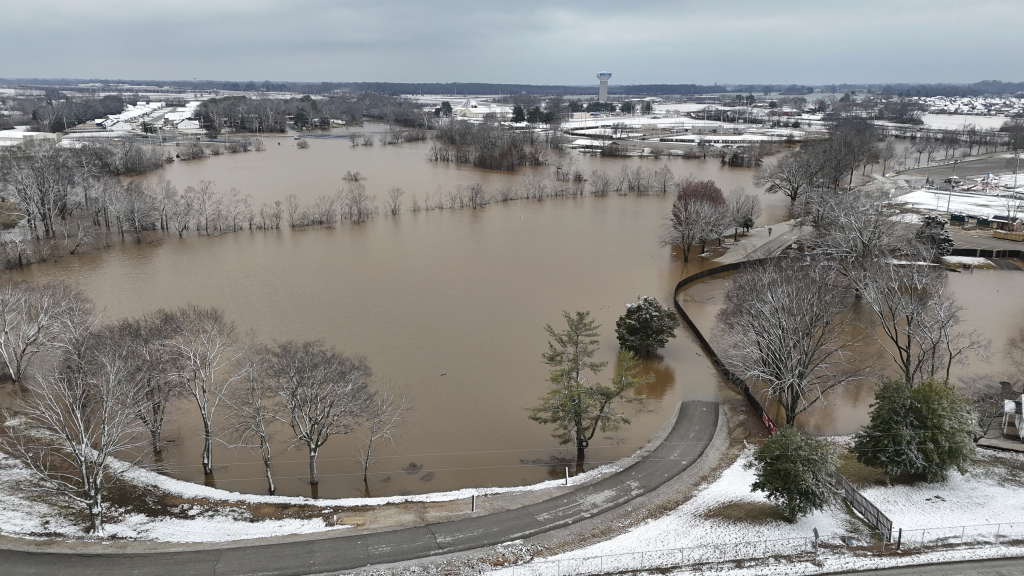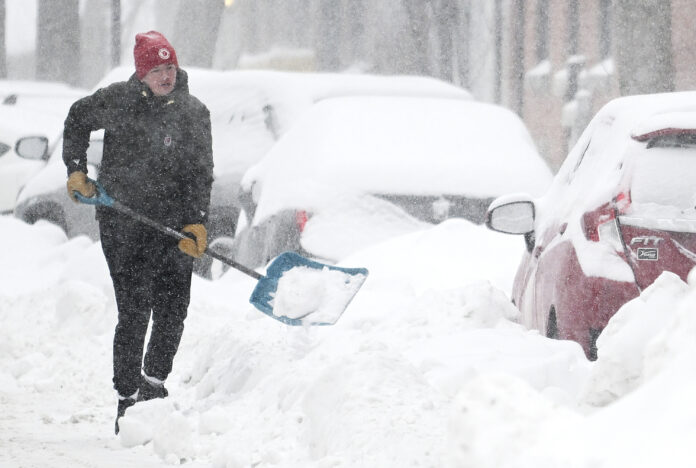The National Weather Service issued dire warnings of “life-threatening cold” through Tuesday.
In northeastern Montana, temperatures were forecast to plummet to a bone-chilling -45°F (-42.7°C), with wind chills dropping as low as -60°F (-51°C).
Meteorologists confirmed this as the tenth and most severe polar vortex event of the season, with Arctic forces driving frigid air typically trapped near the North Pole into the U.S. and parts of Europe.
Kentucky Faces Devastation and Rising Death Toll
Kentucky Governor Andy Beshear confirmed Sunday night that the state’s death toll had climbed to nine.
“I am sad to share some more tough news tonight, Kentucky,” Beshear said. “We just confirmed another weather-related death out of Pike County, bringing our total loss to nine people.”
At least 1,000 residents stranded by rising waters had to be rescued, according to Beshear. President Donald Trump approved Kentucky’s disaster declaration request, allowing FEMA to assist in relief efforts.
Most of the fatalities, including a mother and her 7-year-old child, resulted from vehicles getting trapped in floodwaters.
Floodwaters Swallow Towns and Cut Off Communities
Several parts of Kentucky and Tennessee were submerged, with up to six inches of rainfall reported. Bob Oravec, a senior forecaster with the National Weather Service, warned that “swollen streams and widespread flooding” would continue in the coming days.
In Tennessee, officials declared a state of emergency for Obion County after a levee failure flooded the town of Rives. Mayor Steve Carr warned that mandatory evacuations were necessary due to rising waters, widespread power outages, and freezing temperatures.

Meanwhile, Alabama was hit by a confirmed EF-1 tornado in Hale County, destroying mobile homes and toppling power lines.
In Canada, the city of Montreal had to dog out from a fresh blanket of heavy snow.
Extreme Cold and Heavy Snow Hammer the Rockies and Midwest
As floodwaters devastated the Southeast, snow and ice turned roads treacherous across the Midwest. Michigan State Police reported 114 crashes in the Detroit area alone as snow continued to fall. In Colorado, eight people died in vehicle accidents since Valentine’s Day, and three state patrol cruisers were struck on icy roads.
Authorities also issued avalanche warnings across the Rocky Mountains, particularly in Utah, Colorado, and Washington state, where snowpack instability posed significant risks.
Power Outages and Emergency Declarations Stretch Across the East
From New York to Georgia, thousands of homes were left without power as high winds brought down trees and utility poles. Virginia’s Albemarle County saw widespread outages, with emergency response times delayed due to overwhelming calls for service.
In West Virginia, flooding forced the governor to declare a state of emergency in 13 counties, cutting off entire communities. Several volunteer fire departments even reported their own stations flooded as they attempted to respond to calls.
Stay Off the Roads, Officials Warn
Governor Beshear urged residents to avoid unnecessary travel. “So folks, stay off the roads right now and stay alive,” he pleaded.
As the brutal winter storm continues its march, meteorologists warn that the worst may not be over. More extreme cold and snow are expected to sweep across the country, bringing additional hazards in the coming days.




